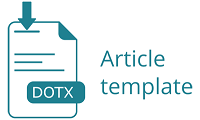THE MOTHER'S KNOWLEDGE LEVEL, THE ROLE OF HEALTH OFFICER AND THE BEHAVIOUR OF USING MONOSODIUM GLUTAMATE (MSG) FOR CUISINES
DOI:
https://doi.org/10.32807/jkp.v10i2.27Abstract
Abstract : According to John Olney’s research  (1996) MSG is given as food to the baby of white mouse, if it is given at  high dose (0.5 g / kg body weight / day) or at higher dose, it can cause damage to some nerve cells, especially the section of the brain called the hypothalamus. The parts of the brain that are responsible become central of appetite control, temperature, and other vital functions. This study aims to describe the mother's of knowledge level, the role of health workers and the behaviour of using monosodium glutamate (MSG) for foods. This study was conducted on March 2014 in the Rural Area of West Perampuan, Perampuan village, Labuapi Sub-District of West Lombok Regency. This study used descriptive and observational cross-sectional approach. The number of sample on this study was 80 samples. The sample collection was conducted by systematic random sampling. the data collection gained from interview and questionnaire. The age of the samples was mostly over > 35 year as many as 52 people (65%). Most of the samples education was 50 people on elementary level (62.5%), and most of the sample worked as a housewife, as many as 46 people (57.5%). The level of knowledge of the sample was still in the low category, as many as 52 people (65.0%). Health workers did not play a role. Total sample was 100% added monosodium glutamate (MSG) for their foods and as many as 69 people (86.25%) were added MSG for their foods in accordance with the optimum dose of 0.1 to 0.8% of the volume of the food. the result of the research was most of the mothers were still lack of knowledge of using monosodium glutamate (MSG) and health workers did not play a role. However, the mothers’behaviour to use monosodium glutamate was still relatively safe.
Downloads
Published
2018-04-10
How to Cite
Adiyasa, I. N., Abdi, L. K., & Fujiawati, R. (2018). THE MOTHER’S KNOWLEDGE LEVEL, THE ROLE OF HEALTH OFFICER AND THE BEHAVIOUR OF USING MONOSODIUM GLUTAMATE (MSG) FOR CUISINES. Jurnal Kesehatan Prima, 10(2), 1756–1766. https://doi.org/10.32807/jkp.v10i2.27
Issue
Section
Articles





